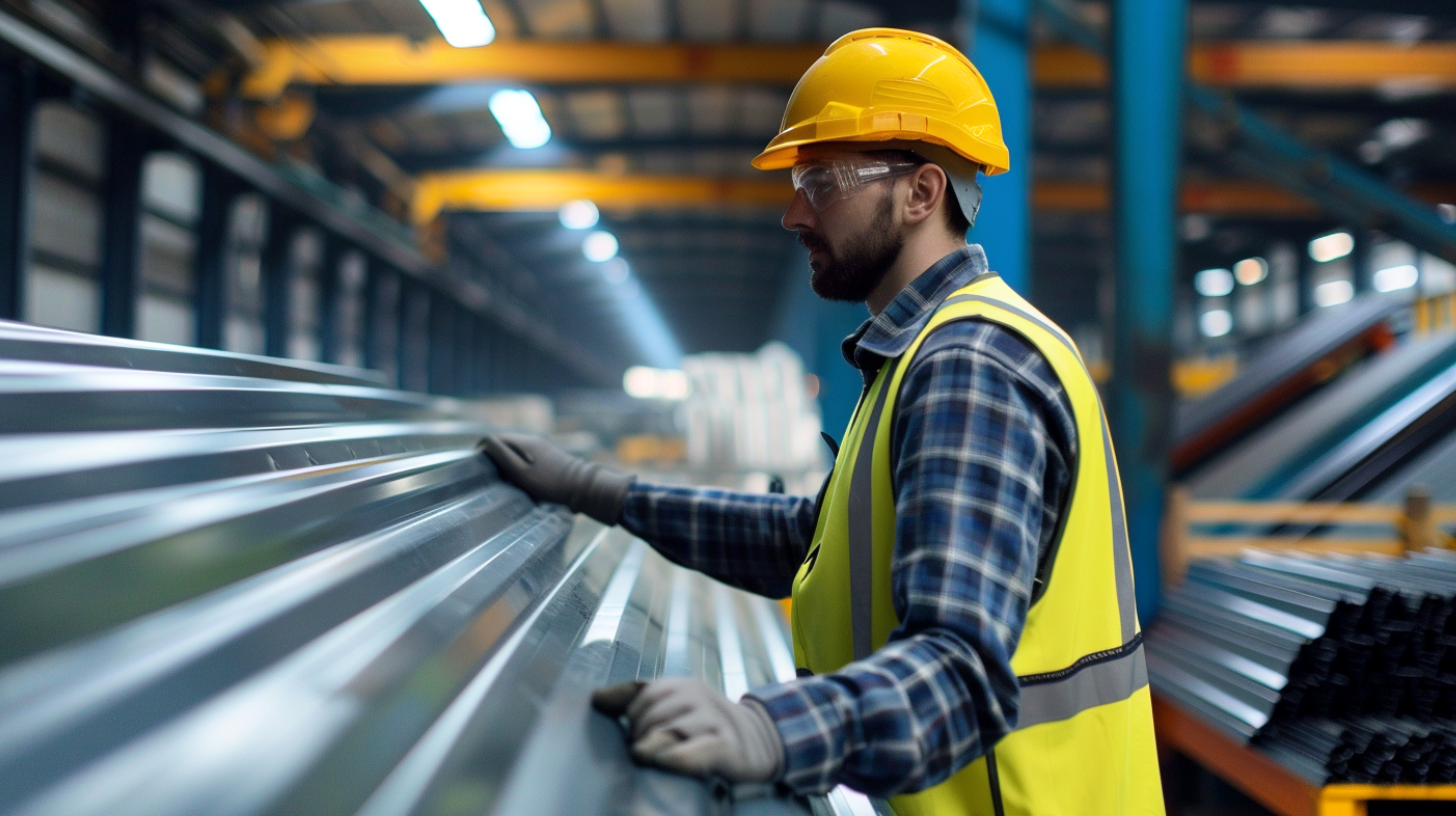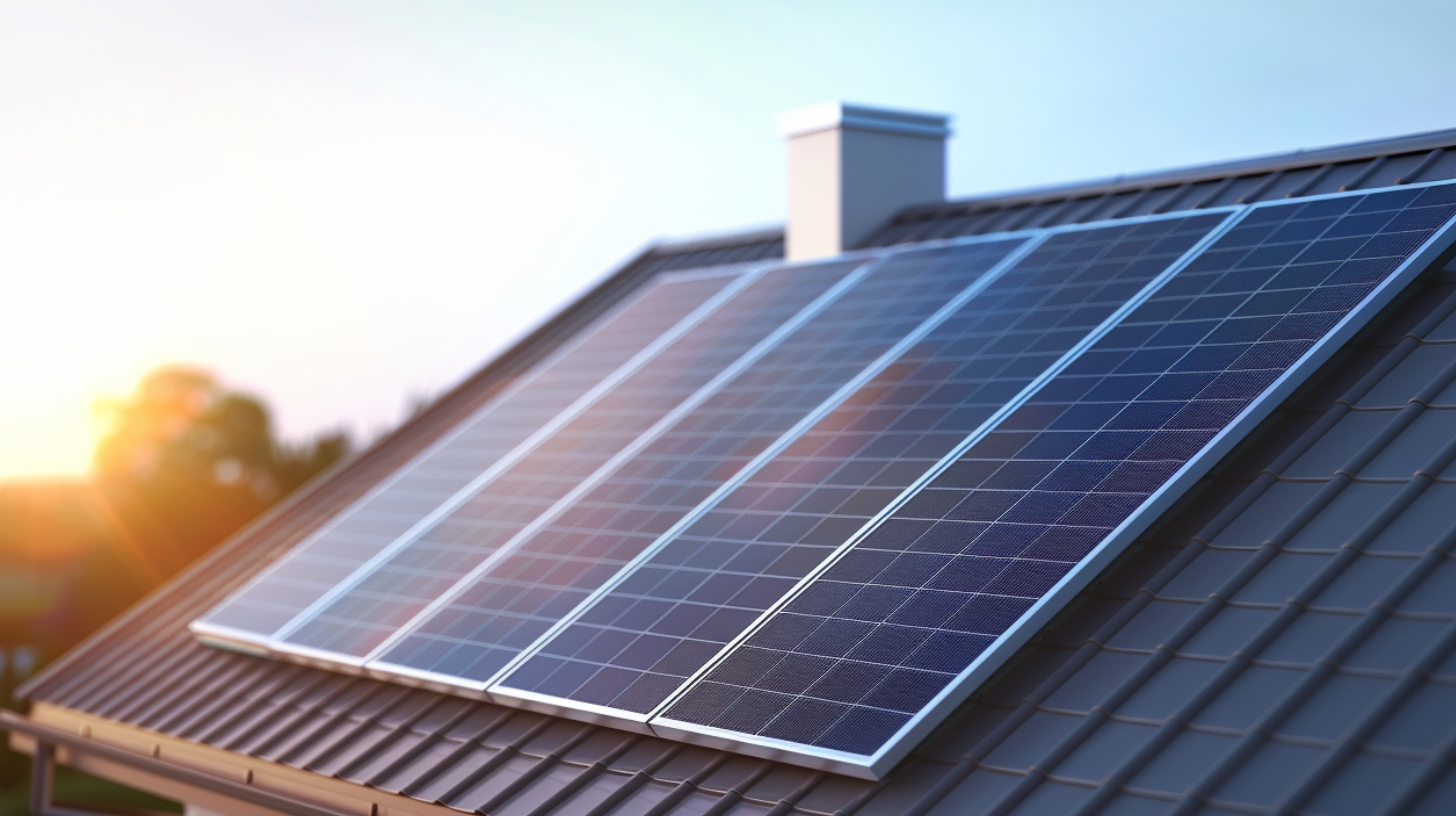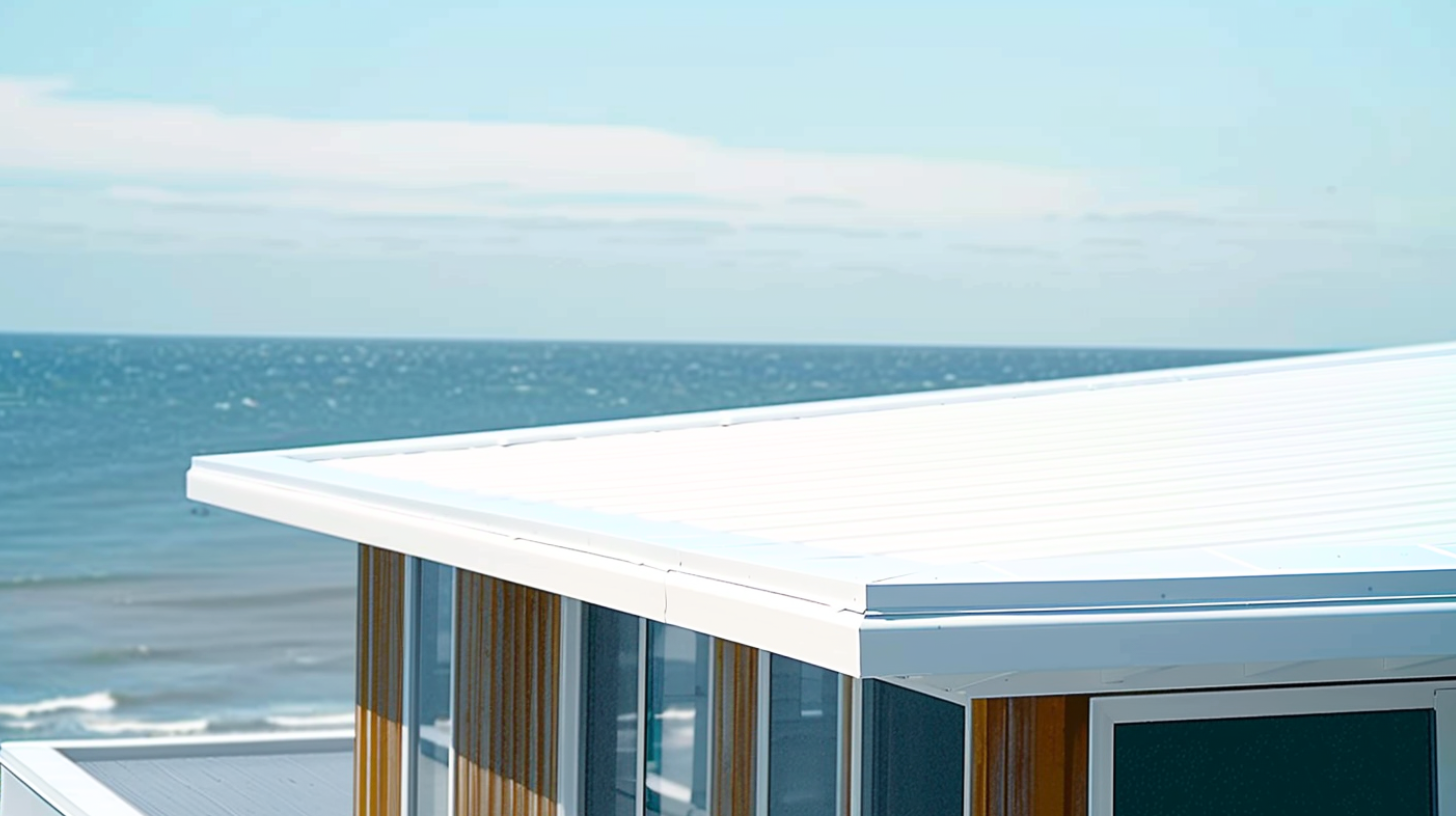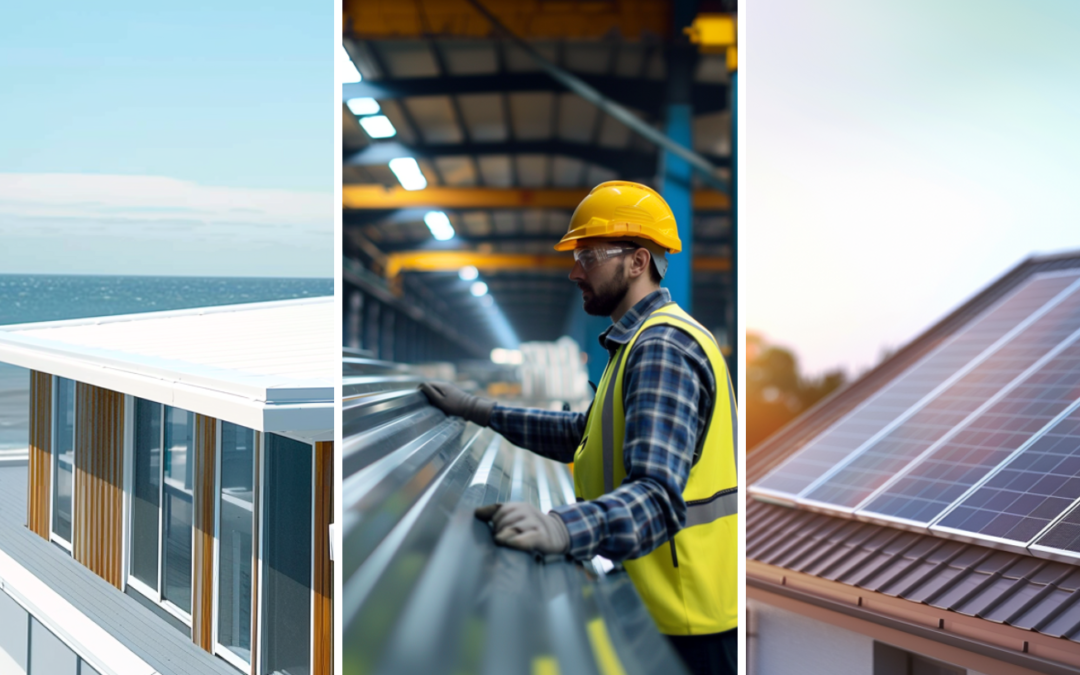Getting Started with Eco-Friendly Materials
The significance of eco-friendly roofing materials lies in their ability to reduce the carbon footprint and improve energy efficiency. Traditional roofing materials often contribute to greenhouse gas emissions during production, release harmful chemicals into the atmosphere, and contribute to the heat island effect. On the other hand, eco-friendly roofing materials are designed to mitigate these issues.
Homeowners can significantly reduce their carbon footprint by opting for eco-friendly roofing materials. These materials are often made from recycled or sustainable materials, such as reclaimed wood, recycled metal, or rubber from old tires. This reduces the demand for new resources and enhances the circular economy.
Moreover, eco-friendly roofing materials are designed to improve energy efficiency in homes. They provide effective insulation, reducing the need for artificial heating or cooling. This lowers energy consumption and leads to cost savings on utility bills.
Using eco-friendly roofing materials reduces our environmental impact and improves home energy efficiency. Homeowners can contribute to a more sustainable future by choosing these materials while enjoying reduced energy consumption and cost savings.

Eco-friendly Materials - What Makes a Roof Eco-Friendly - Sky Roofing Construction & Remodeling
What Makes a Roof Eco-Friendly?
Durability
When discussing the durability of roofing materials, it is essential to consider their ability to withstand various environmental factors. Moisture, wind, fire, flying debris, snow, ice, and hail are common challenges that a durable roof should be able to withstand.
Moisture, including rain, can cause significant damage to roofs if they are not properly built and maintained. A durable roofing material will have excellent moisture resistance, preventing water leaks and potential mold growth.
Strong winds can also pose a serious threat to a roof’s integrity. Roofing materials with high wind resistance can prevent damage such as uplift and detachment, ensuring the roof’s long-term functionality.
Fire safety is another vital aspect to consider. Durable, fire-resistant roofing materials provide a layer of protection to the building, reducing the risk of significant fire damage.
Flying debris, such as tree branches or other objects, can puncture and tear roofing materials. A durable roof should withstand such impacts, maintaining its integrity and preventing leaks.
In regions with heavy snow, ice, or hail, durability is crucial to protect against damages caused by their weight or impact. A durable roof can withstand these elements, minimizing the risk of collapse or necessary repairs.
Prioritizing durability when choosing eco-friendly roofing materials is essential for environmental sustainability. We can ensure a long roof lifespan by selecting materials that can withstand moisture, wind, fire, flying debris, snow, ice, and hail, reducing waste and conserving resources in the long run.
Embodied Energy
Firstly, the production stage plays a significant role. Mining raw materials for roofing products, such as metal, clay, or asphalt, requires energy-intensive processes. These materials then undergo processing, which involves further energy consumption. The extraction, refining, and manufacturing of these materials contribute significantly to the embodied energy of the final product.
Lastly, delivering roofing materials to the end consumer contributes to embodied energy. This includes packaging, storage, and handling, often requiring additional energy resources.
Considering these factors, it becomes evident that reducing embodied energy in roofing products is essential for minimizing environmental impact. Individuals can be crucial in promoting eco-friendly roofing options by choosing materials that require less energy-intensive processes or those sourced locally.
Recycling and Reusability
The importance of recycling in producing eco-friendly roof tiles cannot be overstated. Recycling reduces greenhouse gas emissions, contributing to significant environmental benefits. By diverting materials from landfills, we decrease the release of harmful gases into the atmosphere, reducing air and water pollution. Additionally, recycling saves energy, as producing materials from recycled sources requires less energy than creating them from scratch.
Various sustainable roofing materials manufactured from recycled or sustainable sources are available. Recycled metal, for example, can be utilized to create durable and long-lasting roof tiles, with the added benefit of being 100% recyclable at the end of their lifespan. Rubber and plastic roofing materials made from recycled materials are also increasingly popular, as they offer durability and resistance to harsh weather conditions.
Other sustainable options include sustainably harvested wood shakes from responsibly managed forests and bamboo, a fast-growing and renewable resource. Clay tiles, often manufactured using locally sourced clay, provide an environmentally friendly alternative, as they can be easily recycled or reused after being used on a roof.
Contribute to a Healthy Ecosystem
Unlike traditional roofing materials, eco-friendly options prioritize sustainability and environmental responsibility. They are produced using renewable resources and have minimal impact on the ecosystem during manufacturing. Additionally, they are applied using eco-friendly installation techniques that avoid harmful chemicals.
The benefits of using eco-friendly roofing materials are abundant. First and foremost, they help minimize environmental impact by reducing carbon emissions and waste generation. Individuals can actively participate in preserving biodiversity and the planet’s overall health by choosing these materials.
Furthermore, eco-friendly roofing materials often have a longer lifespan, reducing the need for replacement and the associated environmental costs. They can also promote energy efficiency, reduce a building’s carbon footprint, and help conserve natural resources.

Eco-friendly Materials - Eco-Friendly Roofing Benefits - Sky Roofing Construction & Remodeling
How Eco-Friendly Roofing Benefits Your Home
One significant benefit of eco-friendly roofing is the potential for monthly bill savings. These sustainable materials are designed to provide better insulation, keeping your home cooler in the summer and warmer in the winter. As a result, less energy is required to maintain a comfortable temperature, leading to lower heating and cooling costs.
In addition to cost savings, eco-friendly roofing allows homeowners to reduce their carbon footprint. By using sustainable materials, you are helping to conserve natural resources and reduce harmful emissions. This environmentally conscious choice can significantly impact the fight against climate change.
Furthermore, opting for eco-friendly roofing materials can offer potential tax incentives. Many governments and local authorities provide tax credits or deductions for homeowners who make environmentally friendly choices. These incentives help offset the initial investment and encourage homeowners to choose sustainable home options.
By choosing sustainable roofing materials, you make a responsible and environmentally conscious decision for your home and the planet.

Eco-friendly Materials - Types of Eco Roofing - Sky Roofing Construction & Remodeling
Types of Eco Roofing
Metal Roofing
Another benefit of metal roofs is their energy efficiency. Metal roofs are designed to reflect sunlight, reducing the heat the building absorbs. This reduces the need for air conditioning during the summer, leading to lower energy costs. Additionally, metal roofs have the advantage of allowing snow to cascade off easily, preventing the formation of ice dams in the winter. This helps prevent damage to the roof and reduces the risk of leaks.
Metal roofing also stands out due to its recyclability. Unlike other roofing materials disposed of in landfills, metal roofs can be recycled at the end of their lifespan. This helps conserve natural resources and reduces environmental impact.
Steel, aluminum, and copper are common materials used for metal roofing. Each offers unique advantages in terms of strength, durability, and appearance.
Lastly, metal roofs are fire resistant, providing safety and protection. This feature can give homeowners peace of mind, knowing their roofs can withstand fires and help prevent the spread of flames.
With its durability, energy efficiency, recyclability, and fire resistance, metal roofing is an environmentally friendly choice for any home or building.
Green Roofing
One significant benefit of green roofs is their positive impact on air quality. These roofs act as natural air filters by absorbing pollutants and purifying the surrounding air. Additionally, they contribute to reducing energy costs by providing insulation and reducing the need for air conditioning during hot summer months. This, in turn, helps to mitigate the urban heat effect by keeping cities cooler and reducing the demand for energy-intensive cooling systems.
However, the installation of green roofs can be quite costly. Factors like specialized materials, additional structural support, and professional installation increase costs. Despite this drawback, the long-term benefits of green roofs are significant. These roofs have a longer lifespan compared to traditional roofing materials, reducing the need for frequent replacements. Moreover, the aesthetic appeal of green roofs enhances the overall beauty of a home, blending it harmoniously with the environment.
Recycled Shingles
One of the most significant benefits of using recycled shingles is their durability. These shingles are engineered to withstand harsh weather conditions, including strong winds and heavy rain, ensuring they will last for many years. Additionally, they require minimal maintenance, perfect for homeowners looking to save time and money on roof repairs.
In terms of aesthetics, recycled shingles offer a wide range of colors and styles. This means homeowners can find the perfect shingle to match their exterior design, enhancing their property’s overall curb appeal.
Clay Tiles
In addition to durability, clay tiles provide a wide array of colors and styles, allowing homeowners to achieve their desired aesthetic. From traditional Mediterranean red to contemporary earth tones, clay tiles’ versatility ensures they can complement any architectural style.
Another advantage of clay tiles is their energy efficiency. The natural composition of clay helps regulate indoor temperatures by reducing heat transfer, resulting in lower cooling costs during hot summer months.
The process of making clay tiles also contributes to sustainability. Clay is a readily available material requiring less energy than roofing materials. Furthermore, clay tiles are non-toxic and can be recycled, reducing landfill waste.
However, there are some challenges to consider when installing clay tiles. Due to their weight, additional structural support may be necessary, increasing the installation’s complexity and cost. Clay tiles can also be more expensive upfront than roofing materials, although their durability often offsets this initial investment.
Solar Roofing
One form of solar roofing is solar panels, typically installed on top of existing roofing materials. These panels are photovoltaic cells that capture sunlight and convert it into electricity. Another form is solar tiles, which are designed to look like traditional roofing materials but have solar capabilities. This allows for a seamless integration of solar power into the home’s aesthetic.
However, there are some drawbacks to solar roofing. The installation cost can be relatively high, requiring specialized labor and materials. Additionally, the effectiveness of solar roofing highly depends on the amount of sunlight the area receives. Regions with less sunlight may benefit less from solar roofing than areas with ample sunlight exposure.
Before considering solar roofing, weighing the potential benefits against the cost considerations and necessary sunlight exposure is important. Solar roofing can provide significant energy savings and environmental advantages; some homes or locations may have more suitable options.
White Roofing/Cool Roofing
Several materials commonly used for white roofing are available. These include white tiles, metal roofing with a reflective coating, and white thermoplastic roofing membranes. Each material has unique characteristics and advantages, but they all share the goal of reflecting sunlight and reducing heat absorption.
While white roofing boasts several benefits, it also has some drawbacks. The primary issue is that white roofs tend to get dirty more quickly than traditional dark-colored roofs. This may require frequent maintenance and cleaning to ensure optimal performance and appearance. Another potential drawback is that white roofing materials can be more expensive upfront than conventional ones.
Despite these drawbacks, white roofing remains an excellent choice for buildings exposed to direct sunlight for extended periods. Its energy-saving qualities benefit the environment and provide long-term cost savings for property owners. By selecting white roofing, individuals can contribute to a more sustainable future while enjoying the advantages of reduced energy bills and a more relaxed living or working environment.
Wood Shake Roofing
However, there are some downsides to opting for wood shake roofing. One primary concern is its flammability. Wood shake roofing is highly susceptible to catching fire, especially in areas prone to wildfires or lightning strikes. This can pose a serious risk to homeowners’ safety and well-being.
Moreover, wood shake roofing tends to have a higher price tag than other roofing materials, such as metal roofs. This can deter budget-conscious individuals or those looking for a more affordable option. In addition, wood shake roofing typically has a limited lifespan, lasting around 20-30 years, which means it may require more frequent replacement than other roofing materials.
Is Eco-Friendly Roofing Right For You?
In addition to saving money, eco-friendly roofing allows homeowners to impact the environment positively. Homeowners contribute to the global effort to combat climate change by reducing their carbon footprint. Eco-friendly roofing materials often have lower levels of volatile organic compounds (VOCs) and reduce the need for fossil fuel consumption. This helps to minimize greenhouse gas emissions and lessen the overall demand for non-renewable energy sources.
Furthermore, choosing eco-friendly roofing options may open the door to various tax incentives. Many governments and local authorities offer tax credits or rebates to homeowners who install energy-efficient roofing materials. These incentives provide financial relief and encourage sustainable practices that benefit individuals and the environment.
It is important to note that eco-friendly roofing options vary depending on several factors, including sun exposure, location, structure, and weather conditions. Homeowners should carefully consider these factors to determine the most suitable materials for their needs. Consulting with roofing professionals can help ensure the right choice is made for optimal energy efficiency and long-term sustainability.
Embrace a Greener Future with Eco-Friendly Roofing
Eco-friendly roofing materials are an innovative and sustainable choice that benefits your home and the environment. By opting for eco-friendly roofing materials, you can enjoy improved energy efficiency, a reduced carbon footprint, and long-term cost savings. For expert guidance and to schedule a roofing consultation, contact Sky Roofing Construction & Remodeling (skyroofingconstructiontx.com/) at (210) 942-9797 today. Switch to eco-friendly materials now and contribute to a greener, more sustainable future.
Willis Vachon is a seasoned contributing writer for Sky Roofing Construction & Remodeling, specializing in the technical and safety aspects of roofing construction. With a keen eye for detail and a passion for ensuring quality and safety in every project, Willis provides valuable insights that help both professionals and homeowners make informed decisions about their roofing needs.

